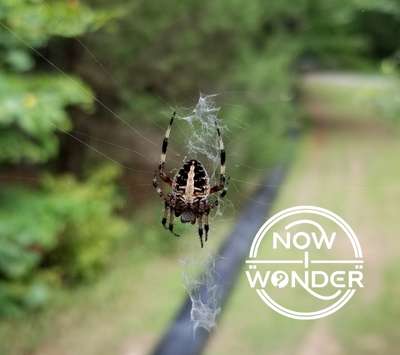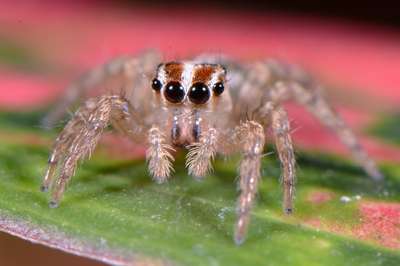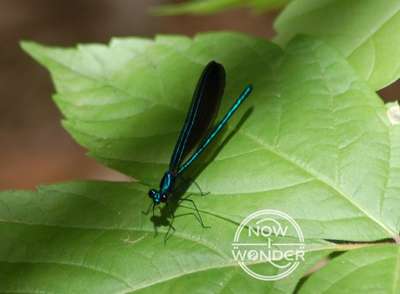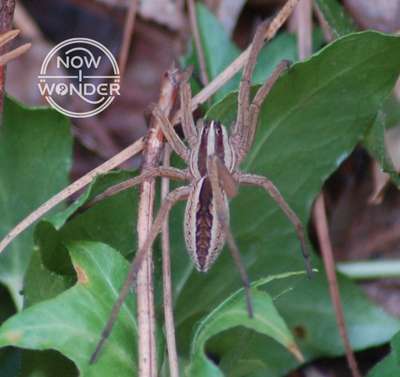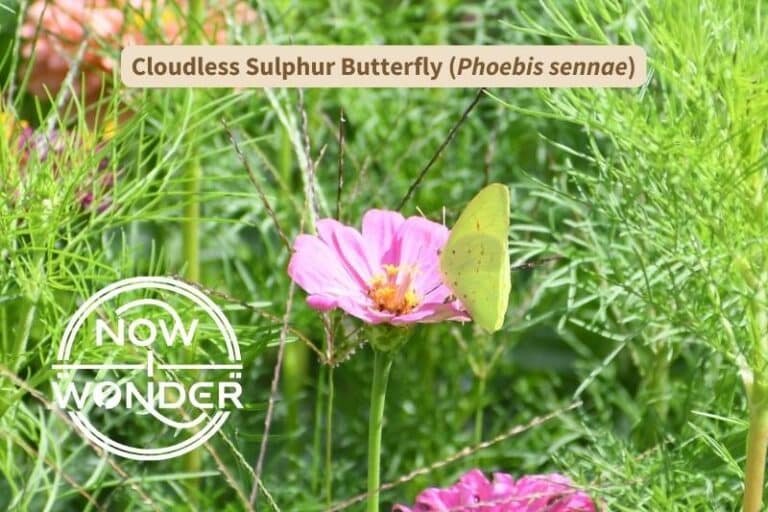Variegated Fritillaries are medium-sized orange butterflies with 2.25 inches (5.7 cm) wing spans. Adults have a wide, pale band and a black zigzag stripe on their wings. Caterpillars are orange, black, and white striped, with rows of black spines. Their chrysalids are white, bronze, and gold.
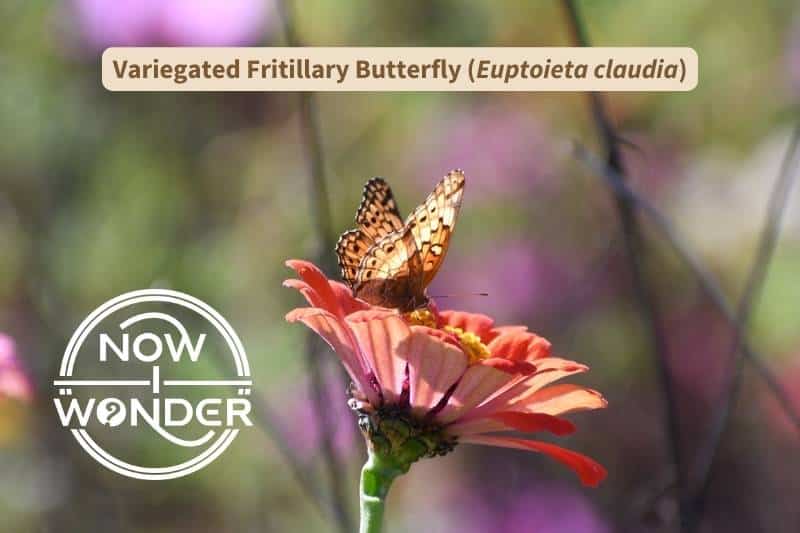
Fun Facts About Variegated Fritillary Butterflies to Wow Your Friends
- Variegated Fritillaries live throughout North Carolina. But they are less common than other North Carolina fritillaries.
- Variegated Fritillaries appear in local pockets across the state.
- Another North Carolina fritillary, the Gulf Fritillary (Agraulis vanillae), is easier to find.
- Variegated Fritillaries are only occasional garden visitors. They tend to stay in wilder areas, like natural meadows, and quiet fields.
- Variegated Fritillary caterpillars feed on a huge variety of plants.
- Only Painted Lady (Vanessa cardui) butterflies have a broader menu than Variegated Fritillaries (Pyle 1981).
- Variegated Fritillary caterpillars eat an unusual menu compared to their fellow fritillaries.
- Other fritillary species can eat only certain plants. For example, caterpillars in genus Speyeria feed only on violets (Violaceae). Caterpillars in genus Agraulis feed only on passion vines (Passifloraceae).
- But Variegated Fritillary caterpillars can feed on both, which gives them an advantage.
- Variegated Fritillary caterpillars are known as “pansyworms” as they feed on cultivated pansies (Baker 2019).
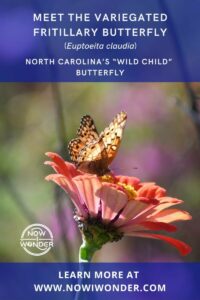
How are Variegated Fritillary Butterflies Classified?
| Kingdom | Animalia |
| Phylum | Arthropoda |
| Class | Insecta |
| Order | Lepidoptera |
| Family | Nymphalidae (“brush-foot butterflies”, sub-family Heliconiiae, “longwing butterflies” |
| Genus species | Euptoieta claudia |
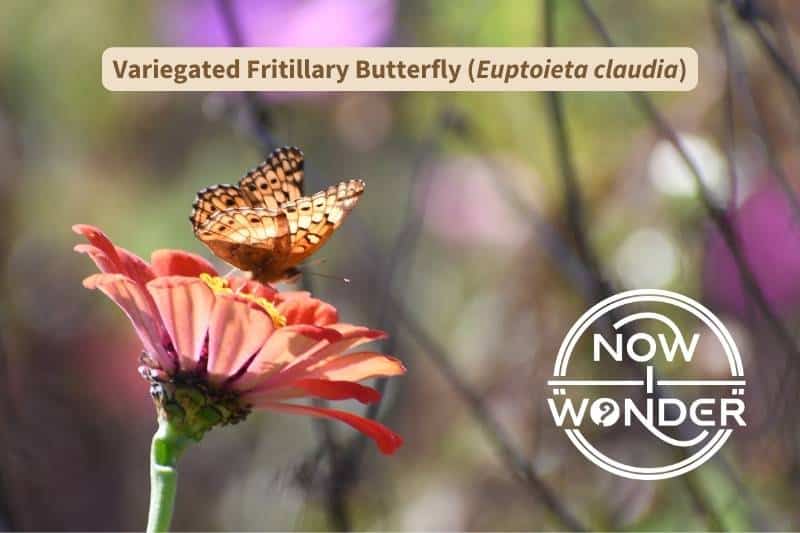
How Do I Know I’m Looking at a Variegated Fritillary Butterfly?
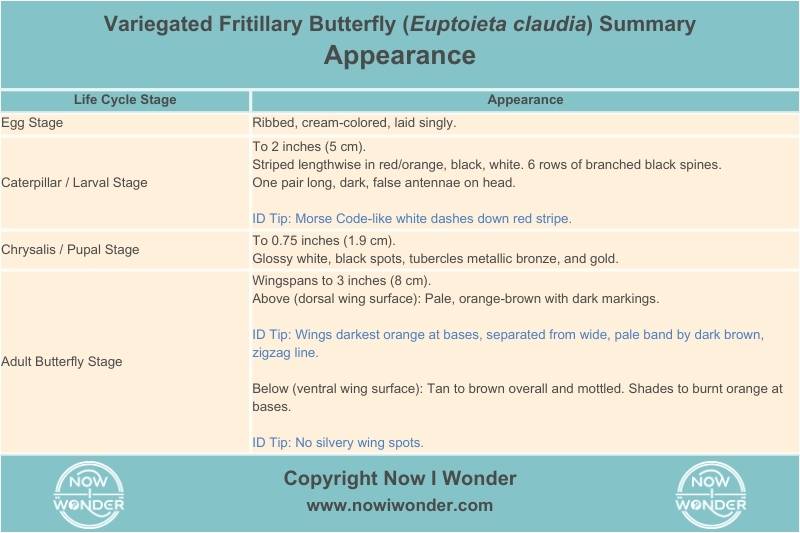
Appearance of Variegated Fritillary Butterfly Eggs
Variegated Fritillary eggs are ribbed, and cream-colored (Pyle 1981). Female butterflies lay them one at a time on the leaves of host plants.
Appearance of Variegated Fritillary Butterfly Caterpillars /Larvae
Variegated Fritillary caterpillars are shiny, striped, and spiny. They grow to approximately 2 inches (5 cm) (Wagner 2005).
Orange, black, and white stripes run lengthwise down their bodies. A white patch decorates each abdominal segment in at least one of the orange back stripes. These patches can sometimes look like Morse Code. They are an important field mark that identify Variegated Fritillary caterpillars.
Six rows of long, black, branched spines called “scoli” ring each body segment. One pair is especially long and extends past the caterpillars’ heads. These scoli look like antennae or horns.
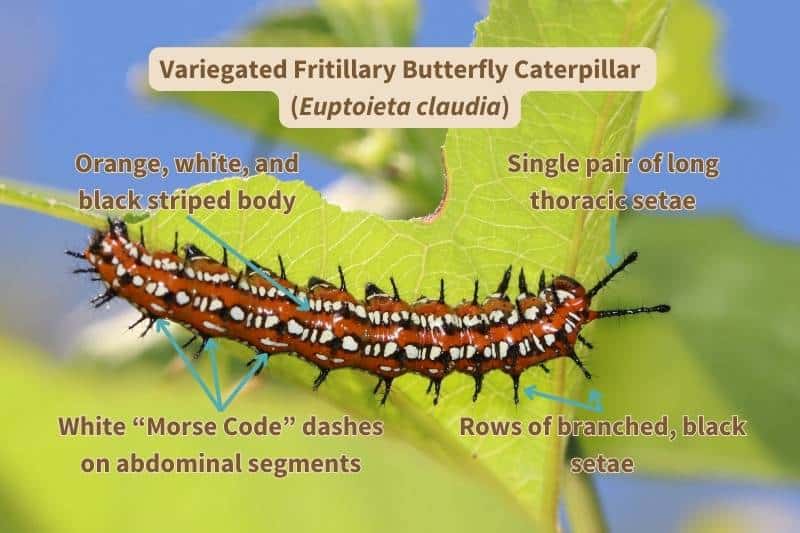
Variegated Fritillary chrysalids are truly beautiful. They are glossy white with black spots, and look metallic. Rows of short, squat spikes called “tubercles” project from the chrysalid cases. The tubercles are metallic bronze and gold.
Variegated Fritillary chrysalids are small, only about 0.75 inches (1.9 cm) long. I have never discovered a Variegated Fritillary chrysalis in the wild personally. But I continue to search every year. Seeing one in real life would be thrilling.
Until that great moment, though, I have to rely on the work of other lucky photographers. To see one of these truly beautiful Variegated Fritillary chrysalids, check out this Wikipedia entry: https://en.wikipedia.org/wiki/Euptoieta_claudia.
Appearance of Adult Variegated Fritillary Butterflies
Adult Variegated Fritillaries are medium-sized butterflies. They grow to wingspans up to 3 inches (8 cm), although the ones I’ve seen are usually slightly smaller, around 2.25 inches (5.7 cm).
Their bodies, eyes, and antennae are orange-brown. Females and males look similar, except that females are larger and have broader wings.
The upper side of their wings is pale orange, with brown lines and wing spots. The orange color is darkest at the wing bases close to their bodies, and palest in the middle. The pale center wing band is one of the most important field marks for identifying this species. A dark brown line zigzags down their wings. Dark brown spots and bands decorate the outer portions of their wings.
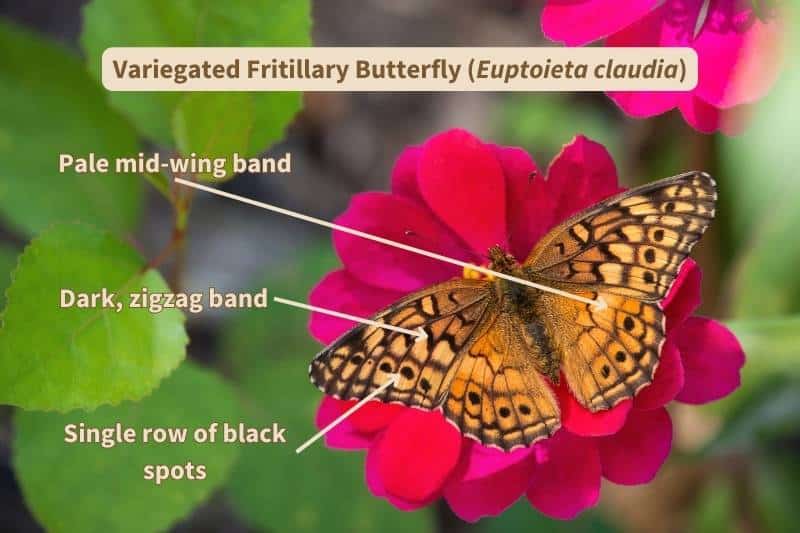
The underside of their wings is pale and mottled with white, beige, and pale orange. As on the top surface, the darkest color is at the base of the wings with a pale band down the center.
Unlike other fritillary species, Variegated Fritillaries do not have any silver spots on the underside of their wings.
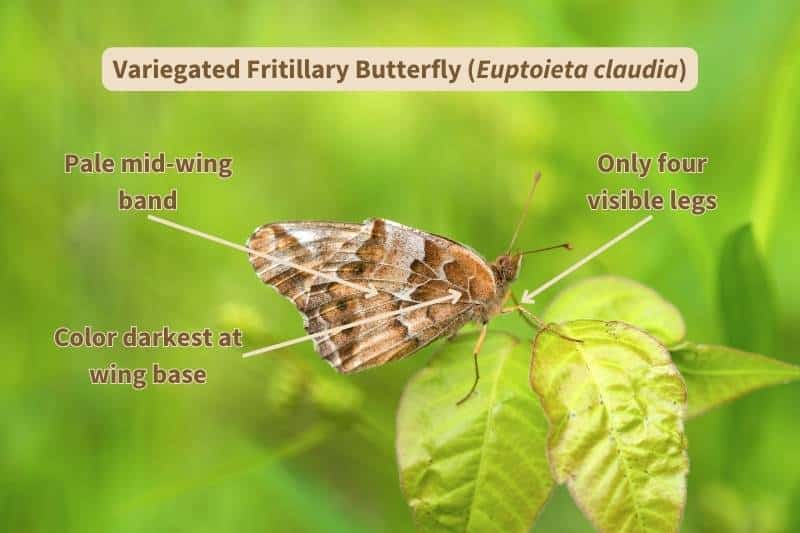
When Can I Find Variegated Fritillary Butterflies in North Carolina?
In North Carolina, Variegated Fritillary butterflies start to appear in early May. Their population stays fairly small until around July. They fly through late November, depending on fall temperatures.
Adults overwinter in the deep South (Pyle 1981) but not in North Carolina.
Where Should I Look To Find Variegated Fritillaries in North Carolina
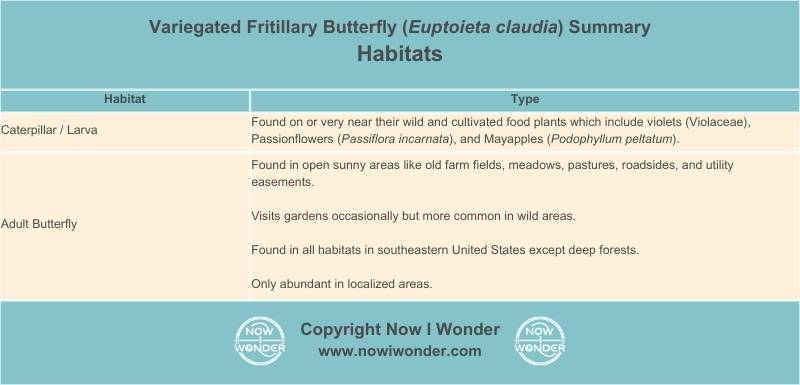
Look for Variegated Fritillary butterflies in meadows, fields, and other open, sunny areas. Sometimes they visit home gardens but less often than many other butterfly species. Be pleased if you spot one in your North Carolina garden. Otherwise, look in the wilder spaces in your North Carolina community, like along roadsides and utility cuts.
Variegated Fritillaries fly low to the ground. Their flight is erratic but they pause often at flowers to sip nectar. They flutter their wings when perched. So, look for movement just above or amongst vegetation.
Look for Variegated Fritillary caterpillars on the leaves of violets and passionflowers. They will be easiest to see in late summer, when they are mature.
What do Variegated Fritillary Butterflies Eat?
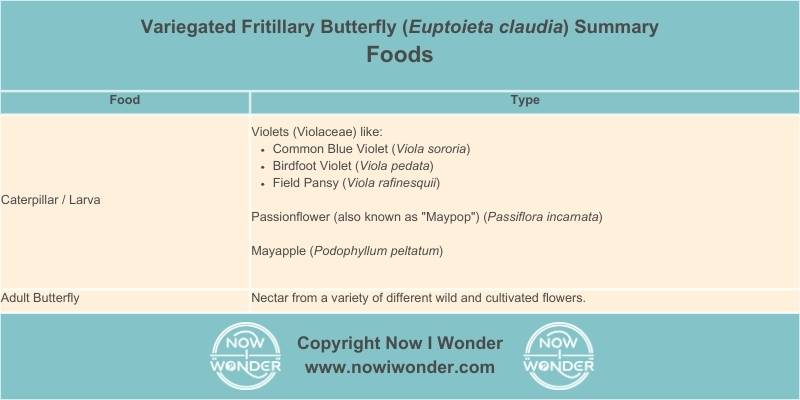
Variegated Fritillary Larval Host Plants
Variegated Fritillary caterpillars feed on a large variety of different plants. North Carolina food plants include:
- Violets (Violaceae) like:
- Common Blue Violet (Viola sororia)
- Birdfoot Violet (Viola pedata)
- Field Pansy (Viola rafinesquii)
- Passionvine (also known as “Maypop”) (Passiflora incarnata)
- Mayapple (Podophyllum peltatum)
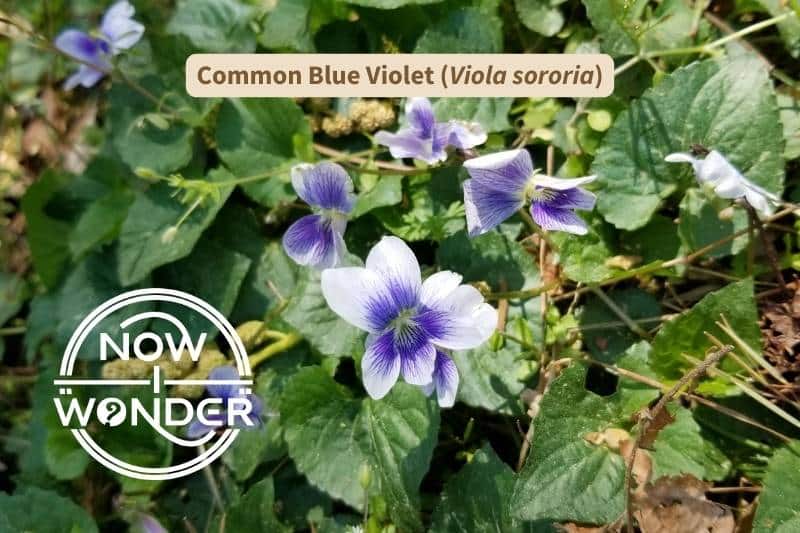
Adult Butterfly Food
Adult Variegated Fritillary butterflies eat nectar from a variety of different wild and cultivated flowers.
References
Baker, James. 2019. “Pansyworm / Variegated Fritillary: PDIC Fact Sheet”. NC State Extension, October 10, 2019. https://content.ces.ncsu.edu/pansyworm
Pyle, Robert Michael, 1981. National Audubon Society Field Guide to Butterflies. New York, NY: Alfred A. Knopf.
Wagner, David L., 2005. Princeton Field Guides: Caterpillars of North America. Princeton, NJ: Princeton University Press.

